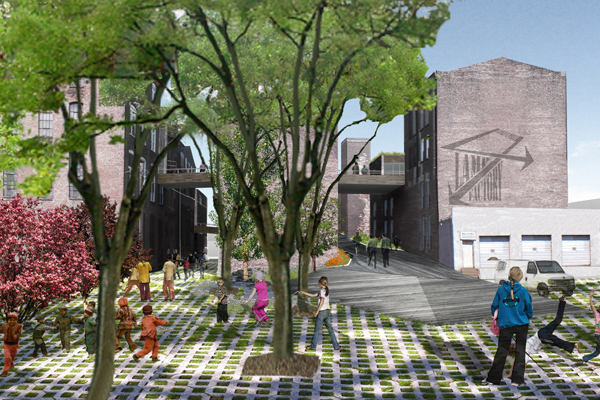 The Community Design Collaborative democratizes design
The Community Design Collaborative democratizes design
by Lee Stabert
A plan is powerful. Lines on a page are often the first step towards realizing the transformation of a space, or a neighborhood. The Community Design Collaborative is driven by this idea.
“Design is not a luxury,” explains Executive Director Beth Miller. The organization was founded in 1991 by a group of architects and planners who wanted to improve Philadelphia neighborhoods. For 20 years, the Collaborative has been coordinating pro-bono preliminary design services for community groups, helping them realize their ambitions while offering pragmatic council.
The Collaborative has been involved in over 500 projects. One of their main goals is to connect those projects, bundling them into themes that can help policymakers and other community groups conceptualize—and capitalize on—the ideas. “We’re more like facilitators than advocates,” says Miller. “We’re trying to connect community groups to services that exist, finding the right connectors and networks to actually get them implemented.” Infill Philadelphia is their latest overarching initiative. It has featured three distinct stages: Commercial Corridors, Food Access and, most recently, Industrial Reuse. Infill was recently recognized by the Urban Land Institute’s Community Action Grants Program for its success in tackling sustainability, infrastructure and workforce housing issues.
On May 27, the results of the Industrial Reuse challenge were revealed. In a packed room, teams of architects explained their visions for addressing the unique challenges of three distinct sites—an out-of-the way stretch of the lower Schuylkill in Southwest Philadelphia, a lamp factory on Oxford Street in Kensington and an unused wing of a factory on American Street. All the designs had an emphasis on industry, innovation and job creation—these were not your average condo conversions.
Even if none of the designs ever get built (about 10 percent of the Collaborative’s projects come to fruition), it was an event that got people thinking about functionality, beauty and development in the city’s working class neighborhoods. A panel of jurors that included architects, planners, product designers and PIDC (Philadelphia Industrial Development Corporation) officials offered their thoughts on the successful elements and potential challenges. It was an evening of ideas—a moment to ponder the potential future of underserved and forgotten spaces in the former “Workshop of the World.”
As always, the impressive work was donated by the firms. “I think that a lot of design professionals come out of school with a real community service ethic,” says Miller. “This is a really good complement to professional development. We actually have more volunteers right now than we can place.”


